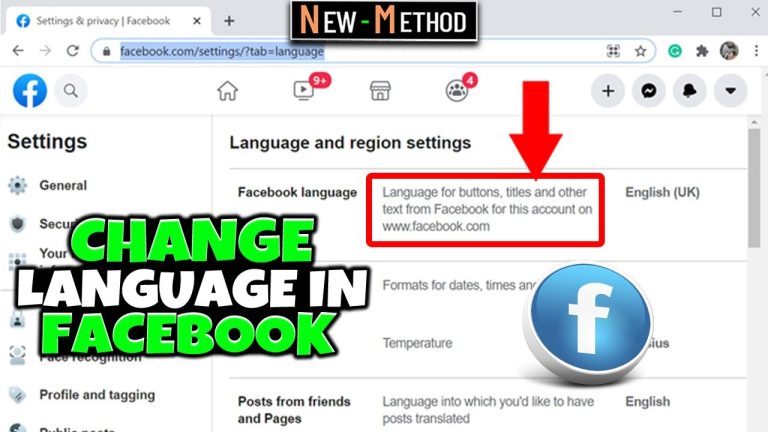These days information is being shared through various means like from a social networking site, via messenger apps, or by image and/or video sharing sites. But, nothing can get better than Blogging. Blogging in its true essence is just the sharing of ideas. Usually, blogs consist of 800 to 1000 words.
Tumblr is one of the most renowned microblogging platforms, allowing its users to blog content with short sentences. One can post a variety of content like photos, links, videos, and so forth. Microblogging is like focusing a laser on your blog. It is ideal for people who get tired of reading lengthy blogs.
That is all Tumblr is about. It offers its audience a Micro-Blogging platform that has the essence of social media too. This has caused more than 166 billion published posts to date.
We have curated this article for you, where we give you 11 Tumblr Alternatives that would almost give you the same experience. Furthermore, you build a strong social presence as you start using other mediums too.
- BLOGGER
- SOUP
- MEDIUM
- MASTODON
- POSTHAVEN
- PILLOWFORT
- TYPEPAD
- ELLO
- STEEMIT
BLOGGER
Before being bought by Google in the year 2003, Blogger was developed by Pyra Labs. Blogger lets users publish blogs with the timestamp entry. These blogs can be accessed through a subdomain called blogspot.com.
Blogger has come up with new features like drag-and-drop templates for editing and adding posts specific to a location. The loading time is faster, undo and redo buttons are simple to use and the like and share buttons let you share content and comments very easily. These UI features make blogging interesting and are attracting multiple users. Blogger has only one downside which is that your blog is hosting doesn’t happen on a web server. However, since it is backed up by Google it doesn’t seem like much of a problem.
Pros:
- It is backed up by Google itself
- Extremely easy to set up and begin using
- Your blog spot blog address can be pointed to a custom domain for free
- You can easily integrate Adsense for Blog Monetization
Cons
- It cannot be scaled
- There are lesser themes and tools
- Your own custom domain is needed.
SOUP
Soup is a microblogging and social networking website. Its users can upload text, Reviews, images, and videos with a very simple dashboard. The website allows its users to change the skin of the dashboard to make it more personalized.
Soup.io lets its users share from popular websites like Flickr, Youtube, and RSS Feeds. This makes soup a website that can easily integrate activities from other social media apps like Tumblr.
The feed features and infinite scrolling and re-posting of contents. Several video channels are also available to browse through and you can like and share their content which later this place on your feed. Groups are available to join based on several topics so that you can follow your interests. It’s a lot like a scrapbook.
Pros:
- The website is quite similar to Tumblr, so getting started is easy
- It schedules your posts just like an email
- It is focused on choices that help create a community
Cons:
- You can’t imply monetization
- There is a need for more plug-ins
MEDIUM
Medium has become a popular blogging platform, with curated content that is rich in quality. It also allows micro-blogging where one can post smaller pieces or chunks of their main content by importing posts from other services and editing according to your style.
Medium does a good job at delivering rich content, Adhering to its tagline “get smarter about what matters to you“. Its algorithm is designed to keep you engaged about topics you love, and authors you would like to follow in your space.
Its features like keyboard shortcuts, link sharing, allowing images, videos, etc has garnered over 120 million readers worldwide. It also lets you know how many people viewed your content and how many claps you have been getting. That gives further room for improvements to writers. Hence medium had to be included in our list.
Pros:
- The content is rich in quality
- It is very easy to import a post
- It provides real-time metrics
- You can generate new followers for yourself
- You have options like private or public posts.
Cons:
- Customizations are restricted
- Posts from others can’t be re-blogged
- Social networking only happens by posting
MASTODON
Since its initial release in 2016, the open-source social network is used by more than 4.4 million users currently.
It supports multiple languages and is quite similar to Tumblr. Unlike other social media networks, it is a community-owned ad-free social platform. This means it is decentralized and there is no one server or one specific company running it.
Here you have a character limit of 500. Users can style their posts, adjusts their thumbnails, add new featured images by using something called focal points, hide things behind spoiler warnings to increase anticipation amongst other users who are following such posts. Mastodon offers to delete and redraft to quickly make corrections if you messed up the design portion of your content,.
It allows you to host your own server, post content, and yet enjoy community features. These features include sharing of content, liking other user’s content, and following other users who have hosted their own server. Another likable feature is the feed which is chronological, add free, and non-algorithmic.
Pros:
- A huge community exists on the platform
- No ads in the feed
- You can decide what you want to see
- It is decentralized
Cons:
- A little confusing to use in the beginning.
POSTHAVEN
This platform is not free and charges a monthly fee of five dollars for a block account, however, it takes care of the domain and hosting and claims to last forever. It has begun seeing users and is among the best-hosted blogs.
You create a post and send it via an email to [email protected]. Your post will be automatically posted. This is the level of security with Posthaven. You also get other security options like password-protected blogs and email notifications for any blog activity.
For the features it offers like post by email, post by web, auto post to Twitter, etc, a fee of five dollars per month doesn’t seem much. The only downside is that there is no free trial which could give users a better understanding of the platform before getting a subscription.
Pros:
- The URLs are highly durable
- You can use your own custom domain name
- It is created for it to last forever
- The blogs are password protected
Cons:
- There is no option of a free trial
- No option of a discounted price for users with a yearly subscription
PILLOWFORT
It is a small social media and blogging platform which is very much like a mixture of Tumblr, Twitter, and LiveJournal. With features like likes, replies, and re-block options and a nice clean home feed, this site is a lot like Tumblr.
Now, members can chat with each other via discussion board and re-blog other users’ posts to the communal feed. To not let the conversation stop, Pillowfort has a concept called threaded comments allowing multiple conversation chains. There is also a filter that controls what is allowed and not allowed on the user’s feed. It offers a tagging system and a page for each user’s blog.
Pillowfort is in its beta stage right now, but you can donate 5$ via Paypal for a registration key.
Pros:
- It includes threaded comments
- Communities can be created under any name
- Includes a tagging system
Cons:
- Signups have to be purchased at $5,
TYPEPAD
Typepad has been offering its brilliant services to some of the big brands like Marriott, Salesforce, The Discovery Channel, Amazon, Zynga, and many more since 2003.
It offers numerous themes tools and plug-ins for getting started. It also promotes your blog on its own network getting in more traffic to your blog.
Typepad has multiple options like “Plus” charged at $8.95 per month, “Unlimited” charged at $14.95 per month, “Premium” charged at $29.95 per month, and “Enterprise” charged at $49.95 per month. The best part is that each of these plans comes with a 14-day free trial so you can try and decide what suits you best.
Pros:
- It is a highly reliable platform
- Offers 14 day trial for every plan
- Support is included for every plan
- The site design can be controlled and you can Monitise by at
Cons:
-
- The basic plan called “Plus” is charged at $8.95 per month
- The basic plan called “Plus” is charged at $8.95 per month
ELLO
Ello a social networking service states that it is a global community of artists dedicated to creative excellence, built by artists, for artists. Built in the year 2014 it aims at showcasing art, photography, fashion, and web culture.
The service claims to be ad-free and you don’t have to choose a real name. The community of artists provides a platform for many to connect with great artists from across the globe. Ello falls short of social networking compared to Tumblr, but that’s fine if you’re an artist looking for just followers and monetization.
Pros:
- You can sell your artwork by just clicking the cell button
- There is no restriction on the kind of artwork that is posted
Cons:
- Falls short on social networking
The front page of the internet, as it claims to be, started back in the year 2005 as a website that only took in links and allowed discussions over them. Since then Reddit has included multiple features where users can now post text, links, images, and videos. This makes it perfect for bloggers interested in microblogging. Currently, Reddit has more than 330 million active users worldwide and 138,000 active communities.
Anyone who follows a topic diligently and is passionate about it can create a subReddit or a community on it. However, Reddit is strictly moderated against spam and other malicious activities.
Reddit’s essence is the posts from its users and an active community with upvotes (karma points) and comments. A user can follow another user in the community or outside.
Pros:
- The platform has high traffic it is good for Link building
- It helps to know what’s happening on the internet
- Anyone can create a subReddit without any problem
Cons:
-
- Multiple user comments can outshine the post article.
- Multiple user comments can outshine the post article.
STEEMIT
This is another option if you are looking for the best of both blogging and social media. The most notable fact about This platform is that it also rewards its users with cryptocurrency.
It is decentralized and is very powerful consisting of multiple categories to choose from one can write articles, read other users’ articles, like, comment, etc just like Tumblr.
Based on the STEEM blockchain, with more and more interaction in their article a user earns cryptocurrency. Reading on the platform does not require any registration but writing and earning on the platform does require you to register.
Pros:
- The content quality is high
- Original content gets rewarded
Cons:
- difficult to use in the beginning
- Sometimes the curation does not work




















